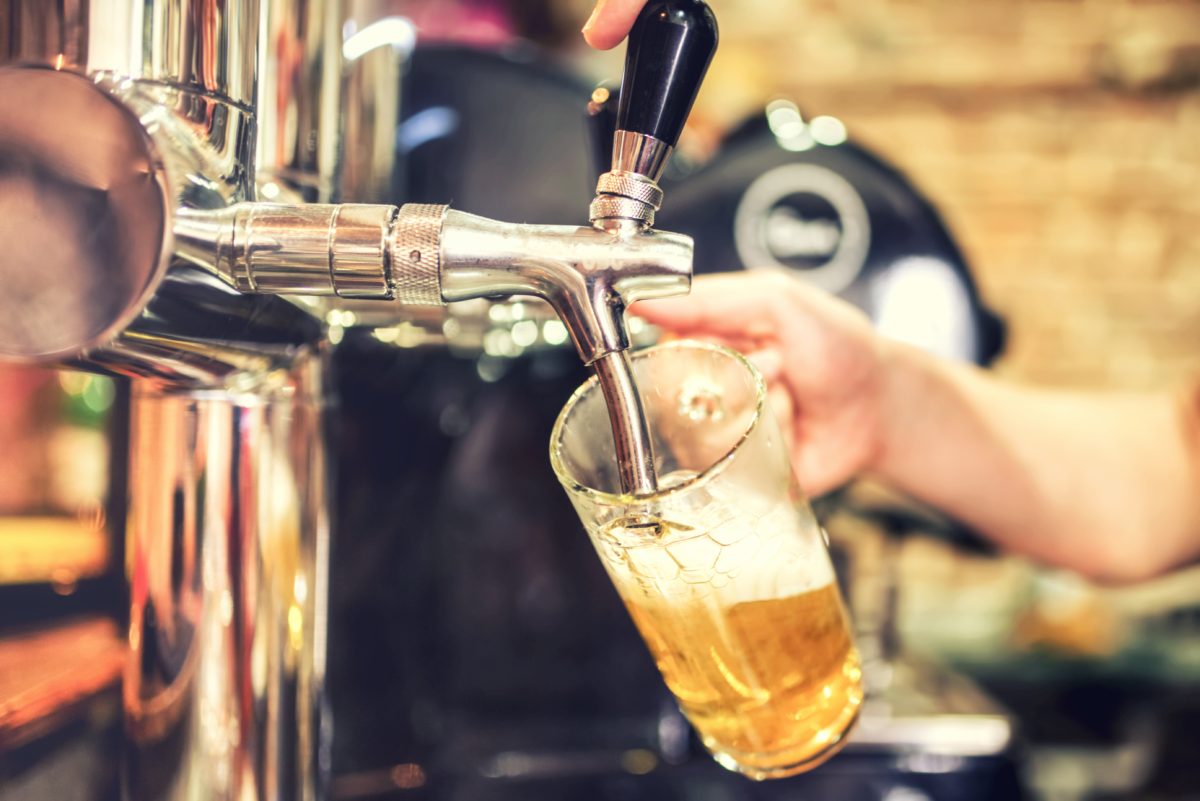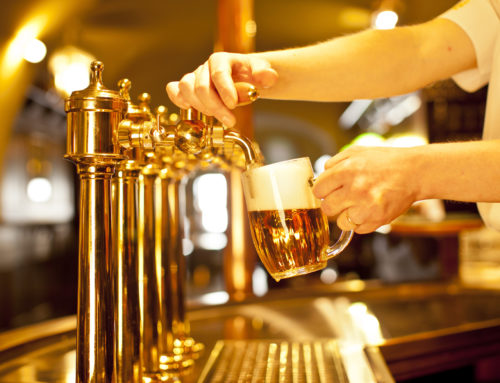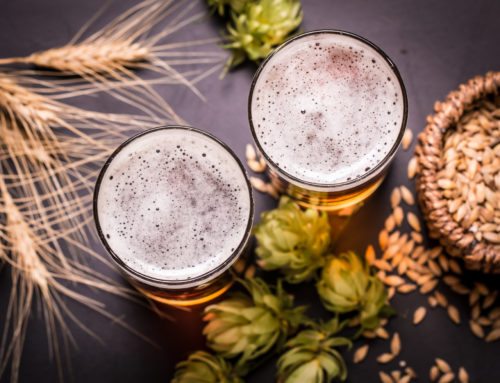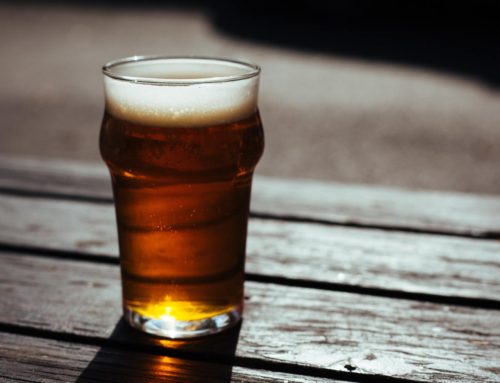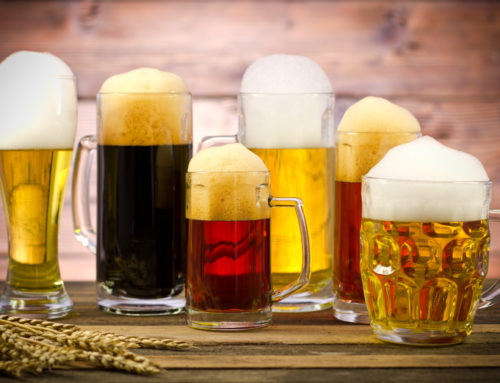If you’ve ever hosted a party or tailgate, you’ve most likely dealt with one of the most annoying party problems: malfunctioning keg taps. When keg taps act up, a variety of annoying things can occur.
Beer can pour foamy, it can burp or sputter, it can come out tasting funky, and worst of all–it cannot come out at all!
Problems with your keg taps can quickly ruin any party or get-together. But don’t worry, there are ways to deal with your keg taps problems so you can get any cookout, birthday celebration, or party back on track!
In this article, we’ll outline common problems with keg taps, and how to address them, so you can stop stressing over your beer, and start pouring them.
Keep reading for the Ultimate Draft Beer Troubleshooting Guide!
So, What is a Keg Exactly?
A keg is a small barrel generally full of beer. It’s kept inside a kegerator, at a home draft beer dispensing machine that refrigerates the beer and keeps it chilled. This allows you to keep beer for a long period of time without the beer losing its quality or freshness.
Full-sized kegerators also include a pressurized carbon dioxide tank and coupler to push the beer out of the refrigerator keg to a beer faucet where it can be poured.
There are four main types of kegerators:
Mini Kegerators
A mini kegerator is a small, self-pressured beer dispenser that holds a mini keg of 5-liters of beers, which is about the equivalent of fourteen twelve ounce cans. They’re great for storing beer with limited space and they can be tapped two to four times.
Full-Size Home Kegerator
A full-size home kegerator is a draft beer dispenser that can hold up to a full-size keg, typically in a fridge, although it can be built into your counter. This model generally comes with a pressurized carbon dioxide tank and a coupler to dispense beer.
Commercial Kegerators
Commercial kegerators are like full-size home kegerators but are designed to meet commercial quality standards. They can be either freestanding or built into your cabinets. They hold half-barrel, quarter barrel, or mini kegs.
Outdoor Kegerators
Outdoor kegerators are draft beer dispensers designed for outdoor use. They can work in lower temperatures and higher temperatures. They’re great for people who want to keep their beer colder, but they also work for garages, basements, and on patios.
What Keg Options Are Available?
When choosing a kegerator, you should also consider the following keg options:
Half-Barrel Keg
Half-barrel kegs are designed to be paired with a full-size kegerator. A half-barrel keg holds about 15.5 gallons of beer.
Quarter Barrel
Also known as a “pony keg”, this keg has the capacity of a standard, half barrel keg. It can hold about 7.75 gallons of beer.
Slim Quarter Barrel
Also known as a “tall quarter”, this keg holds the same amount as a quarter barrel, it just has a different shape.
Mini Keg
A mini keg is a 5-liter keg that you can find in many retail stores and grocery stores. It’s portable and holds about 1.33 gallons of beer.
What Do You Need for Keg Taps?
If you bought a kegerator, all you need for your keg taps is a full keg beer and a full carbon dioxide tank and coupler. Make sure to always refer to your list of kegerator parts or check your kegerator assembly guide before starting.
At What Temperature Should You Store Your Keg?
The temperature you store your keg in depends on the kind of beer you’re drinking, as well as your own personal drinking preferences.
The suggested temperature for storing and serving chilled beer is between 30 and 40 degrees. This temperature suggestion applies to both domestic and imported beers, as well if the beer is or is not pasteurized.
If you’d like to monitor the liquid temperature inside the keg, use a beer thermometer. This will provide an accurate read of the beer temperature within the refrigerator. Also, make sure to adjust the temperature control to a cooler setting during the summer.
How Long Does the Beer in a Keg Stay Fresh?
This is a tricky question because freshness depends on a variety of factors, like the style of beer and whether or not it has been pasteurized. If you’re using keg taps that use carbon dioxide, the beer will be good for roughly six to eight weeks.
Pasteurized beer can last for at least three months if you store it at the appropriate temperature. Unpasteurized beer will only last two months.
Now that you know the basic of kegerators and keg taps we can jump into troubleshooting and solutions. Let’s outline some common problems with keg taps.
Common Problems with Keg Taps
Beer and kegs are great, but they are prone to problems. If you misuse yours or don’t clean it regularly, you could end up with the following problems.
Problem 1: My Beer is Too Foamy
Are you dealing with excessively foamy beer? Well, turns out there are a few potential causes for this issue:
The Draught Cooler is Too Warm
Double check that your barrel is being held at a temperature between 36 to 38 degrees.
The Glasses are Frozen
You should never freeze your glasses because it can freeze the water in the beer and cause excessive foam.
The Beer Lines are too Cold or too Warm
Your beer line systems should be refrigerated and insulated based on the type of beer you’re serving. Always make sure to keep them at the proper temperature.
The Beer is Being Dispensed Incorrectly
The best way to pour a beer is to start by holding your glass at a 45-degree angle, opening the faucet, and then switching to a 90 degree hold on the glass, pouring until you’re almost at the brim. You should also never let the faucet touch your beer.
The Keg Taps or Faucets are Dirty or Malfunctioning
You should always inspect your kegs before serving to make sure they’re clean. If your keg tap is dirty or malfunctioning, the best move is to hire an outside company to clean or fix it.
General Solutions to Try for Foamy Beer
- Contact a professional to clean your keg every 2-3 weeks
- Adjust the pressure in your keg system
- Lower the cooler temperature
Problem 2: My Beer is Flat
Is your beer coming out flat? Here are a few potential causes of this problem:
The Beer is Too Cold
Beer should be stored at a temperature between 36 and 38 degrees. If a beer is too cold, it’ll go flat.
The Glass Hasn’t Been Properly Cleaned
You should sanitize your glasses with bar glass washing and sanitizing chemicals. Grease deposits from improper cleaning can give your beer a flat appearance and taste.
You’re Using an Air Compressor for Pressure
Your keg taps should only be using pressurized gas like carbon dioxide or a blend of carbon dioxide and nitrogen. An air compressor will taint the flavor of your beer, cause performance issues, and shorten the lifespan of your keg.
Problem 3: My Beer Tastes Off
There’s nothing worse than a funky tasting beer. Here are a few potential causes of this taste problem:
You’re Using a Contaminated Pressure Source
You should regularly inspect your carbon dioxide cylinders because rust and other contaminants can easily build up inside them, which will affect the flavor. You should replace your cylinder when possible, and also consider using in-line purifiers to remove contaminants.
Your Beer Lines or Keg Taps Haven’t Been Fully Cleaned
If you don’t clean your beer lines or keg taps, or if your keg taps are damaged or dirty, you can end up with bad tasting beer.
You’re Using an Air Compressor for Pressure
As previously mentioned, an air compressor is a bad investment. It’ll cause performance issues, shorten the lifespan of your keg, and will also make your beer taste funky.
You’re Serving or Drinking Old Beer
As a rule of thumb, you should always try to consume your beer within a reasonable time of filling your keg. As previously mentioned, pasteurized beer can last for at least three months if you store it at the appropriate temperature. Unpasteurized beer will only last two months.
General Solutions to Funky Tasting Beer
- Ask for your line to be cleaned with a chemical-free method to avoid a metallic taste
- Replace your beer
- Ensure your carbon dioxide cylinder is working effectively
Problem 3: My Beer is Just Not Coming Out
There’s no more frustrating problem than when beer won’t come out of the keg taps. If you’re dealing with this issue, it may be caused by one of the following things:
The Keg is Empty
You have to refill your keg from time to time! Try to do regular keg checks to make sure you’re not running low for your next event.
The Gas Cylinder is Empty
This is a less obvious issue than an empty keg. When this happens you should replace or refill the tank. A double gauge regulator is a good investment for your tank because it can easily regulate how much gas is left in the tank.
The Gas is Turned Off
You should always leave your carbon dioxide tank on unless it’s leaking. Keep it on until you’re ready to change the cylinder.
The Keg is Tapped Incorrectly
If you do your keg taps incorrectly, you won’t be able to access your beer.
Here are some steps for tapping your keg correctly:
1. Ice Your Brew
You should chill your keg for at least 2 hours before serving. You can even chill it for 4 to 5 hours. You should also leave the tap on ice with the keg an hour before you decide to tap.
2. Tap the Keg
You should make sure the handles and flanges are not engaged before turning on the tap. Then set the party pump on top of the keg and lock it into place by turning it clockwise. If you see bubbles, disengage the pump and try again.
3. Pour the Foam
Your first glass of beer will always be foamy, so pour foam into a spare glass until the beer starts flowing.
Should You Get a Beer Keg?
Now that we’ve explained how beer kegs work and how to troubleshoot problems, we can talk about why you should get one!
Do You Like Throwing Big Parties?
If you’re someone who enjoys throwing Super Bowl parties or entertaining everyone you know, you should get a keg. As you plan a party, think about how many people you’re going to invite, how long you’re going to have them over, and how much they drink. This will help you figure out if you need one.
A keg is half a barrel, so if you’re having 40 people over that ends up being about 3-4 beers a person.
Benefits of Beer Taps & Kegs
- Beer taps and kegs are cheaper than buying canned beers
- Beer from kegs are of higher quality than bottled or canned
- They’re fun to serve and make anyone a bartender
- They’re less wasteful and more environmentally friendly
- You can more easily serve large quantities of beer
- They’re easy to install, deliver, and collect
Things to Consider Before Buying a Keg
Size and Space
While kegs can come in a variety of sizes, they’re usually pretty big. Before buying, think of how many beers you plan on serving, and how often.
Draught Maintenance & Balance
Beer taps and kegs need a lot of maintenance to work properly. If you don’t plan on investing the time to regularly clean or fix your machine, you should probably stick with canned beer instead.
Final Thoughts on Beer Taps and Kegs
Beer taps and kegs are great for entertaining of any kind. Who doesn’t love a cold beer? But they’re not for everyone, so make sure you consider every part of one before buying.
If you have a beer tap and keg and follow these troubleshooting tips, you’ll be able to make sure your system is working right every time.
Do you have a keg? Have you tried any of these tips? Let us know in the comments!

